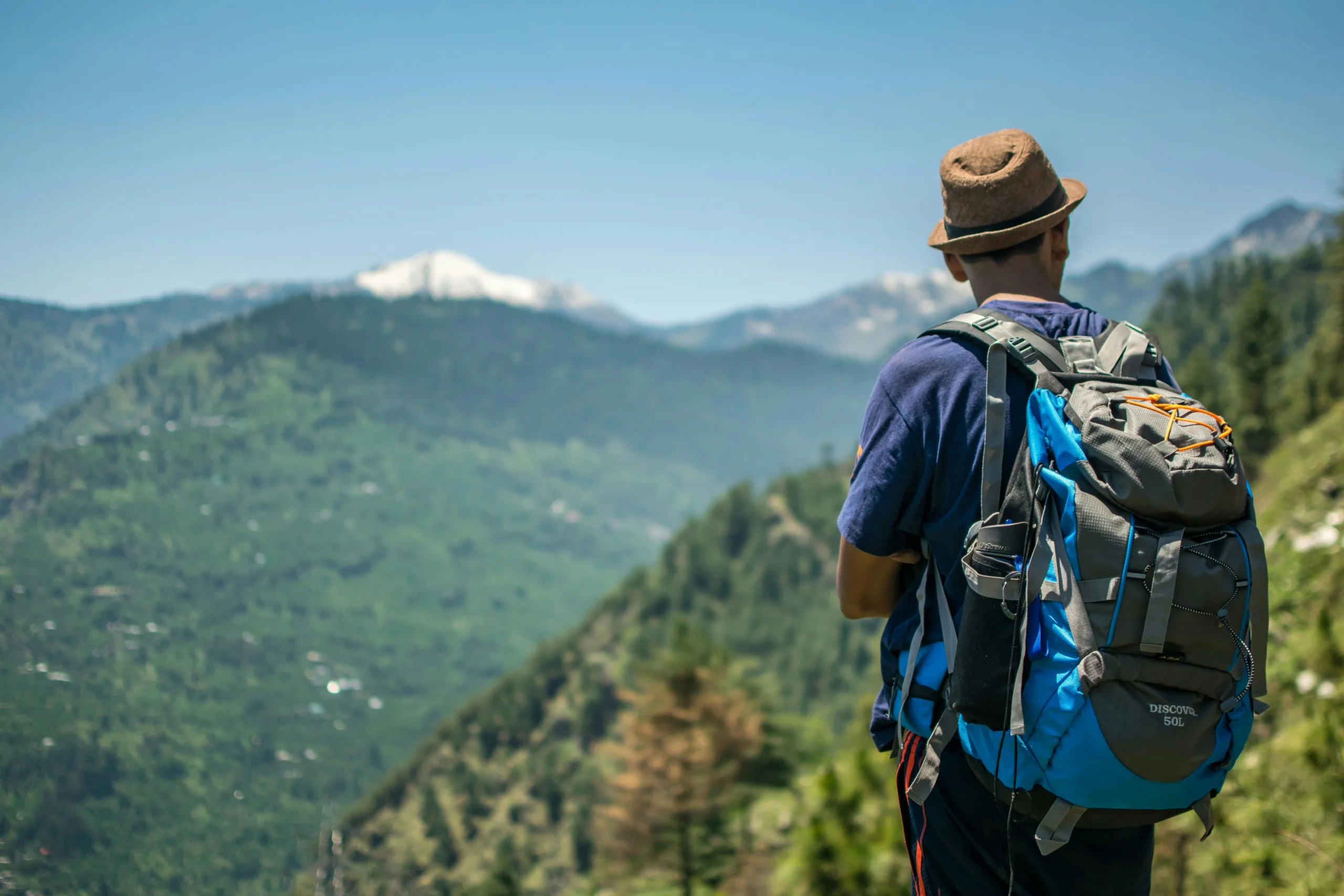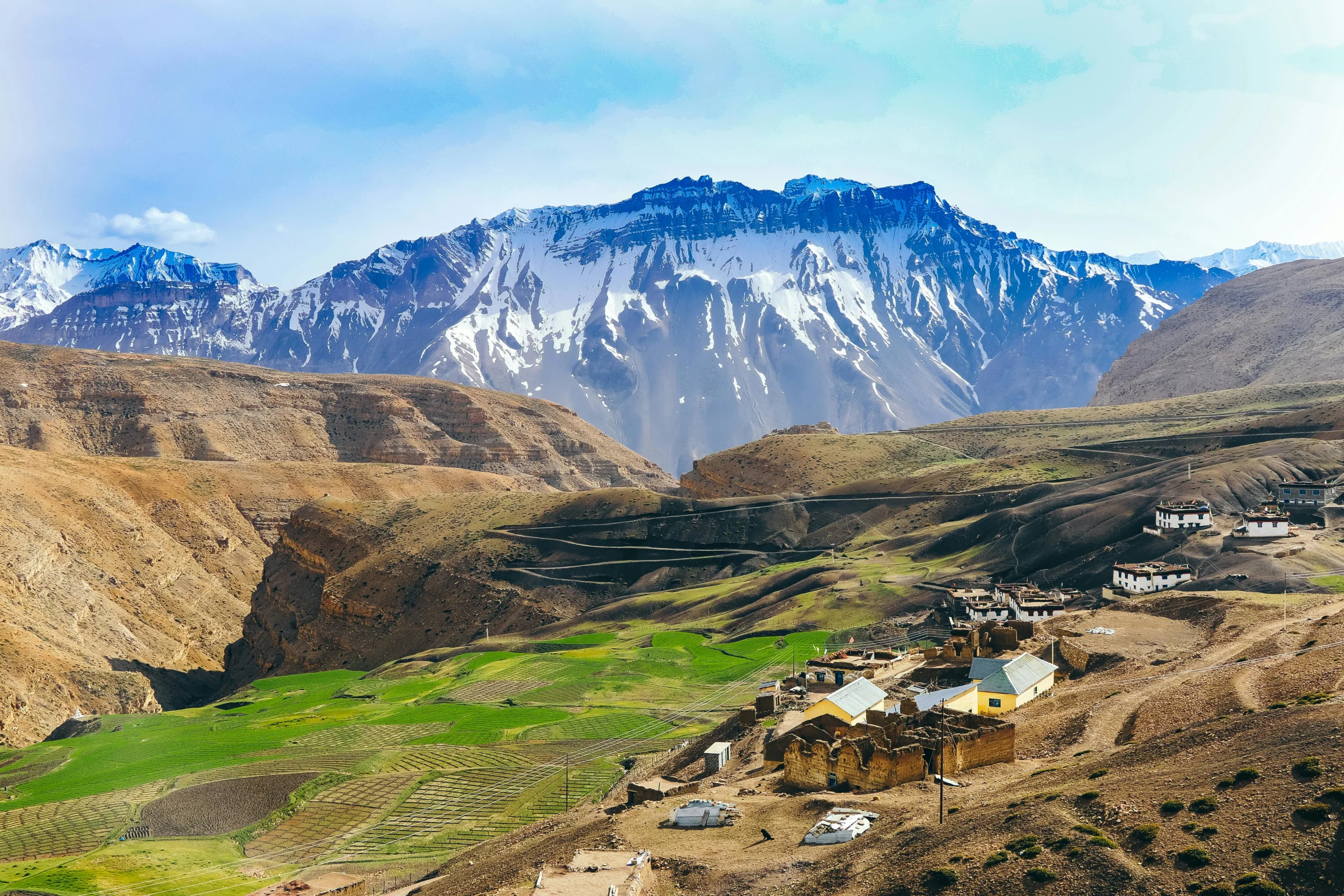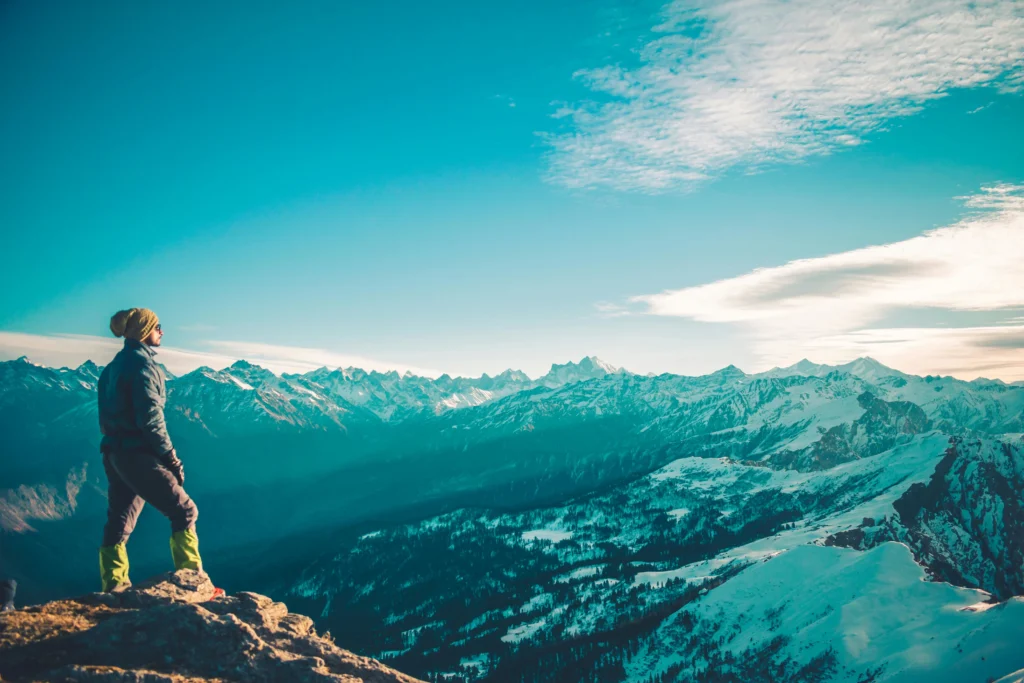
Imagine walking on a mountain trail that’s more than just a beautiful hike but once connected entire world on the map. The Old Silk Route Trek in Narkanda is not your usual weekend escape but a chance to step back in past time and follow in the footsteps of monks, traders, and mountain tribes who once used this route to cross between India and Tibet.
Long before there were no roads, this trail was a very busy trade route as People traveled here carrying salt, wool, spices. But it wasn’t just a goods carrying route, this trail also brought cultures, ideas, and traditions across the borders. Walking this path lets you experience a bit of that history not through books, but by feeling it under your feet.
Old Silk Route Trek begins in the quiet town of Narkanda, which is just a few hours from the Shimla. The views are incredible, especially as you reach higher ridges where the mountains stretch out endlessly around you.
This isn’t a difficult trek but it’s a meaningful one. You’re not just walking for the view (though there are plenty). You’re walking along a route that once linked entire regions a route that once carried not only trade but trust and connection across some of the toughest terrain in the world.
“Quote”
“Tourists visit. Travellers explore” Unknown
A Trail with a Thousand Stories
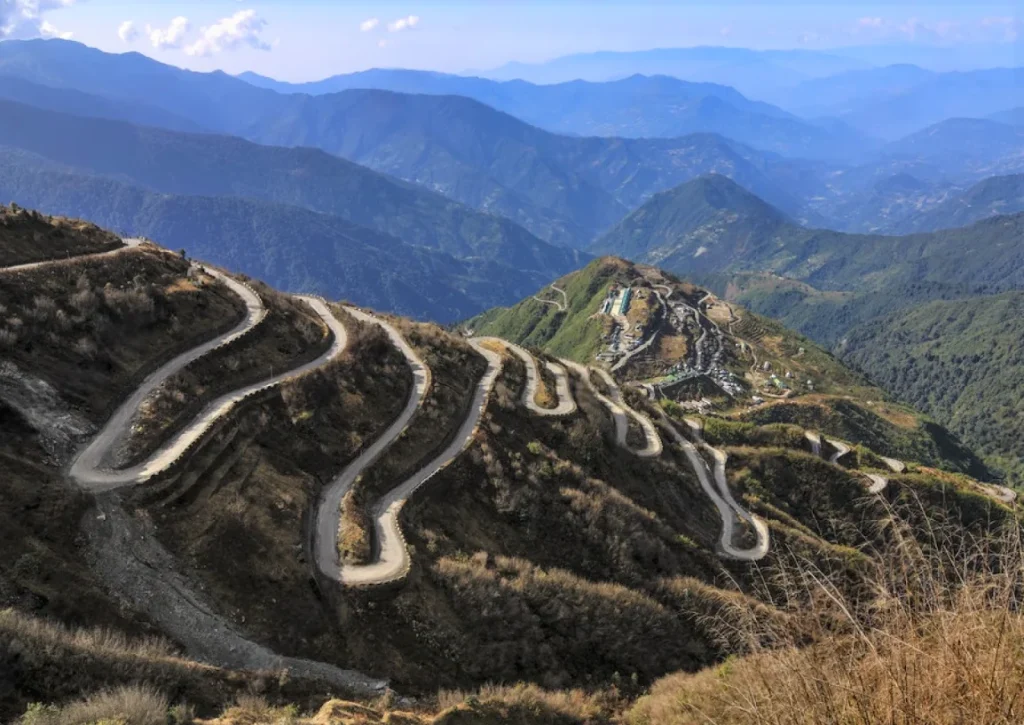
When people hear the word “Silk Route,” most imagine the camel caravans crossing through deserts between China and the Middle East a long, dry trail connecting ancient cities across the Asia. But what many don’t realize is that smaller branches of this legendary trade network also ran through the Indian Himalaya range, including parts of what is now Himachal Pradesh.
One of these less known routes which goes through Narkanda, Kotgarh, Thanedhar, and Sungri, quietly connects the Indo-Gangetic plains of North India to the Tibet. Not as famous as the main Silk Road routes, which goes through Central Asia, but it played an important role in supporting trade, culture, and communication across these high-altitude regions. Back then, it wasn’t just about silk and spices. This trail carried salt, herbs, wool, precious stones, and local goods but also faith, knowledge, and ideas. Buddhist monks, wandering merchants, and even military scouts used these forested mountain paths to move between worlds.
Trekking the Old Silk Route in Himachal today feels like walking through a living piece of history. The village like Kotgarh where Satyanand Stokes planted the first American apple tree in India in 1916 also known as renowned as the “Apple Bowl of India” due to its significant apple and cherry cultivation. There is wooden temples near Hatu Peak. The wood-carved homes, stone pathways, and quiet shrines all whisper of a past where mountains were bridges, not barriers.
What’s special is how this ancient trail blends nature with history. The pine forests, ridge-top views, and old village roads aren’t just scenic they’re part of a story that still lives in the land. And though parts of the old route have faded with time, many sections still remain open to curious travelers, history lovers, and anyone looking for a walk that means a little more than just a workout.
What Makes This Trek Special?




Best Time to Do the Old Silk Route Trek

April to June (Spring is Full of Life)
If you’re looking for the trail at its most beautiful and alive, spring is the time to go. Between April and early June, everything feels fresh the forests are green and full, apple trees are in full bloom, and you’ll hear birds calling from every corner. The weather is right as days are warm & nights are cool. It’s perfect for photography, with soft sunlight and bright flowers everywhere. The path is dry and easy to walk, which makes it a great time for beginners or anyone who wants a gentle trekking experience.

September to November (Clear Views and Autumn Colors)
As monsoon ends the sky opens up and everything looks fresh and vibrant. From September to November, you’ll enjoy cooler weather, clear visibility, and quiet trails. The apple orchards change color, with red and gold leaves making the villages look like something out of a painting. It’s a peaceful time to visit with fewer crowds, softer light, and some of the best views of the entire year.

July to August (Best to Skip It)
Monsoon season (July and August) is not a good time for this trek. The trail can become muddy, slippery, and hard to walk on, and clouds often block the views. There’s also a real risk of landslides and road closures in the mountains during heavy rains. If you want to enjoy the full beauty of the trail safely, it’s better to plan your trip for spring or autumn.
Trip Itinerary Overview
- The Itinerary can be changed according to weather conditions as per your safety
- This is a sample for Itinerary schedule
Trek Route and Details
- Starting Point: Narkanda (easily reachable from Shimla by taxi or bus)
- Trek Type: Easy to moderate, depending on the route you follow
- Key Spots:
- Hatu Peak – scenic summit with historical and spiritual importance
- Kotgarh – apple farming legacy and Indo-Tibetan cultural roots
- Thanedhar – lush meadows, peaceful trails
- Sungri – lesser known forest ridge with expansive views
- You can break the route over 2 to 3 days or cover smaller sections on a relaxed day hike depending on your time and fitness.
Step Back in Time with Peaksnbeyond
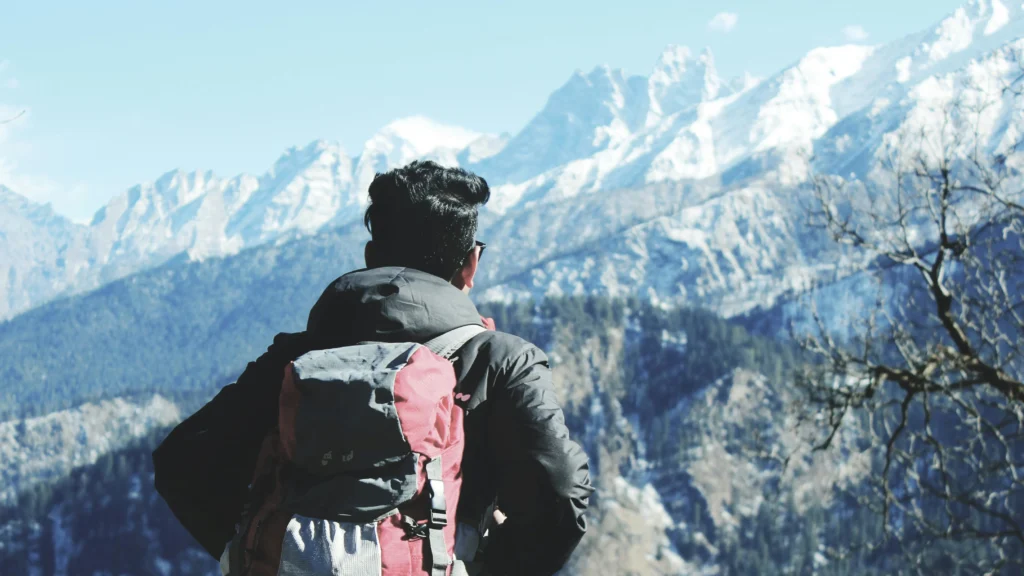
At Peaksnbeyond, we believe a trek isn’t just about getting to the top but everything that happens along the way. The Old Silk Route Trek is more than just a scenic walk in nature but a trail with full of stories. That’s why our guides don’t just lead the trek path they aslo share the local legends, the hidden history, and the quiet, meaningful moments that make this journey feel you personal.
We’ve built close ties with local families and guesthouses, so every evening feels like coming home. The meals are home cooked which feel real Himachali hospitality, the kind that stays with you long after the trek ends.
And you won’t have to worry about the logistics. From permits and transport to carefully planning the route, we take care of it all. Our goal is to keep things safe, smooth, and relaxed, for you walk slowly, take in the views, and feel connected to the land and its stories, just like the travelers who walked this trail centuries ago.
“Quote”
“It is not down in any map; true places never are” Herman Melville
F.A.Q.
Old Silk Route Trek
The Old Silk Route Trek begins from Narkanda. It was once a historical trail used by Tibetan traders, monks, and mountain tribes to move in between India and the Tibetan border. Trek has a peaceful walk through pine forests, ancient villages, and viewpoints like Hatu Peak, Kotgarh, and Thanedhar, ideal for nature lovers and historians.
Yes, this trek is perfect for beginners looking for a somewhat easy to moderate trek. Old Silk Route Trek does not have such steep and difficult climbs, so you can walk at your own pace and enjoy the views.
The best time is:
- April to June for blooming apple orchards and lush greenery
- September to November for clear skies and beautiful autumn colors
- Avoid July and August due to monsoon rains and slippery trails.
Shimla is 65 kms from Narkanda. There are local buses or shared taxi service available to reach Narkanda. From Delhi, it takes around 8–10 hours by road, or you can take a train to Kalka and drive up via Shimla.
If you visit in December to February, you might see snow along the trail and on Hatu Peak. However, the trek isn’t considered a snow trek. Spring and autumn offer better weather and clearer trails.
You’ll get some signal near towns like Narkanda and Kotgarh, but mobile connectivity is patchy along most of the trail perfect for those looking for a digital detox.
You can stay in local guesthouses and homestays in villages like Kotgarh and Thanedhar. These offer basic but comfortable rooms, home-cooked meals, and the chance to experience real Himachali hospitality.
- If you just want to hike to Hatu Peak, 1 day is enough.
- To explore the full route — including Kotgarh, Thanedhar, and Sungri — plan for 2 to 3 days for a relaxed and complete experience.
It’s not just the views it’s the stories, culture, and silence. This trail isn’t crowded. You walk through paths that once connected civilizations, past wooden temples, apple orchards, and villages shaped by Indo-Tibetan influences. It’s slow travel at its best.

